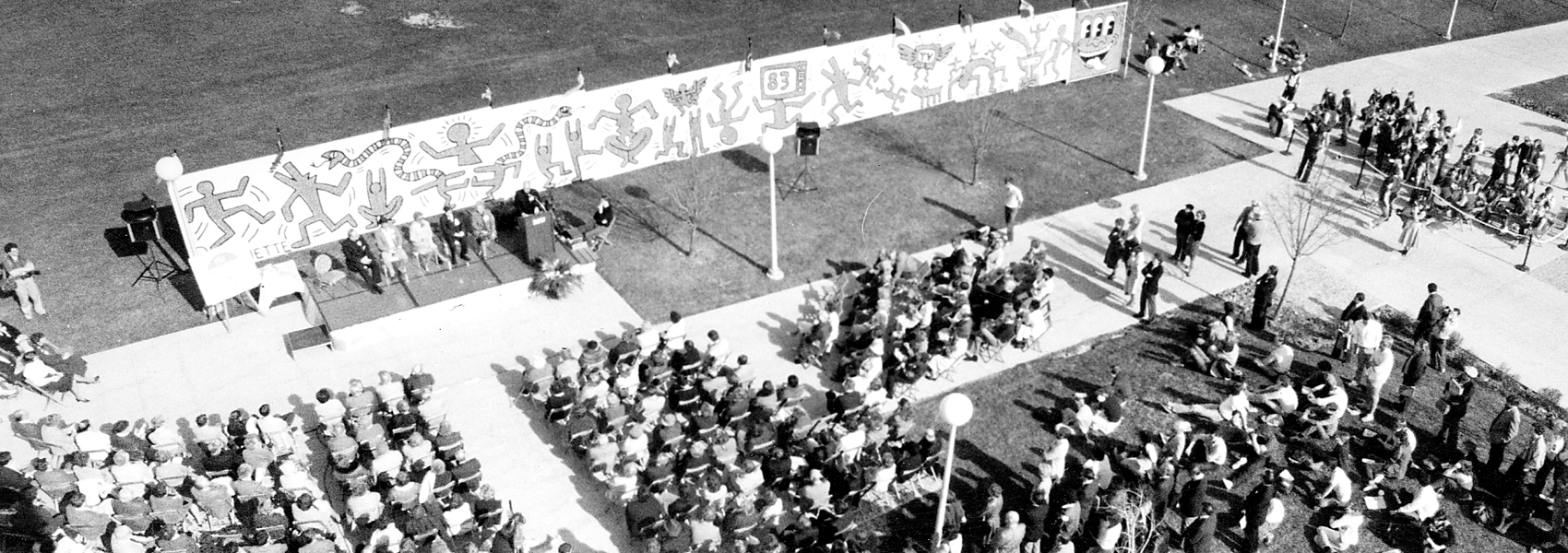The seed for the Haggerty Museum of Art was planted in 1889 when Rev. Stanislaus L. Lalumiere, SJ, donated Père Marquette and the Indians by Wilhelm Lamprecht to then-Marquette College. Seventy years later, English Professor Dr. John Pick formed the Marquette University Fine Arts Committee to promote the arts and survey the works of art on campus. In the late 1970s, the Fine Arts Committee—chaired by Dr. Curtis L. Carter and the newly formed Marquette University Women’s Council—collaborated to build a permanent home for Marquette’s art collection. The Haggerty Museum of Art opened on Nov. 11, 1984.
The Haggerty features approximately eight to nine exhibitions each year. Representing the diversity of work in its permanent collection, the museum has offered exhibitions celebrating the contributions of the Italian Renaissance “Petite Masters"; American self-taught artists; works addressing social change issues; modern American printmaking and photography; and contemporary art from Europe, Asia, Africa, Latin America and Wisconsin.
As a teaching museum, the Haggerty seeks to enhance the undergraduate educational experience by engaging students in various disciplines to think about the world and their subject matter through the lenses of the visual arts. The museum also works collaboratively with elementary and middle school teachers, local artists, and College of Education faculty and students to design programs that engage children and youth in educational activities. Additional educational opportunities for the campus and community include free tours, lectures, workshops and performances.
The Haggerty Museum of Art acknowledges that our campus and Milwaukee are the homelands and waters of the Menominee, Potawatomi, Ho-Chunk, Fox, Mascouten, Sauk and Ojibwe nations, who have known this land and water as a relative for millennia and who remain our hosts on the land today. We also acknowledge that Milwaukee is located along the southwest shores of Michigami (meaning “big water” in Anishinaabemowin), where the Milwaukee River, Menomonee River and Kinnickinnic River meet.


